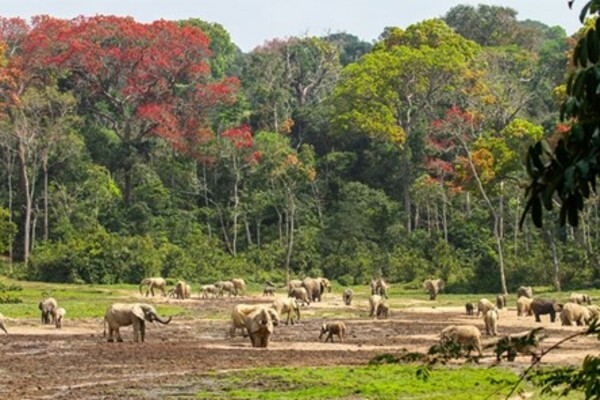
Last year we supported a project in the Dzanga Sangha Protected Area, the largest intact forest block remaining in Central African Republic. It is part of the Congo Basin - a vast biodiverse wilderness stretching across six countries.
Among the threatened and unique species found here are Critically Endangered Forest elephants, great apes (lowland gorillas and chimpanzees), bongo, buffalo, sitatunga, giant forest hogs as well as a large variety of monkeys and duikers.
Within the forest are clearings known as 'bais'. The mineral rich soil and vegetation which grows here is attractive to wildlife including elephants. Dzanga Bai is home to the largest aggregation of forest elephants in the world, with as many as 100 gathering.
The landscape is changing due to human activity and partners including World Wildlife Fund have been active here for three decades helping the government to conserve its exceptional biodiversity and to promote the sustainable management of natural resources for the well-being of the local communities.
We offered to fund three new elephant tracking collars in Dzanga Sangha, along with the monitoring of these elephants for a 24 month period.
The team are keen to fit up to ten new collars to build up a picture of elephant life in the Congo Basin. This is a vital step to managing and protecting this area.
Studies have shown that forest elephants have decreased by two thirds and that they are particularly senstive to human activity.
Images: Dzanga Bai, Nuria Ortega; elephant collaring, DSPA

Dzanga Bai is the most famous clearing in the Protected Area with the mineral rich springs attracting a wide variety of species. It seems to be a 'meeting place' where wildlife comes to socialise - a bit like visiting a village green or the pub!
The bai is monitored by researchers throughout the year from a raised platform.
In May, researchers spotted a female elephant named Echo in the bai. She was first observed at the bai in 1990, and researchers believe she is about 56 years of age. She has had seven calfs over the time she has been monitored.
It was not unusual to see Echo, but it was the first time that researchers had observed four generations of Echo's family together in the bai at one time: Echo, her daughter Echo III, her granddaughter, and her great-granddaughter.
Other members of the Echo family also visited the bai including Echo III's sister, Echo V and her newborn calf.
The mothers socialised and relaxed while the infants played, emphasising the important role of the bai as a meeting place for forest elephants.





